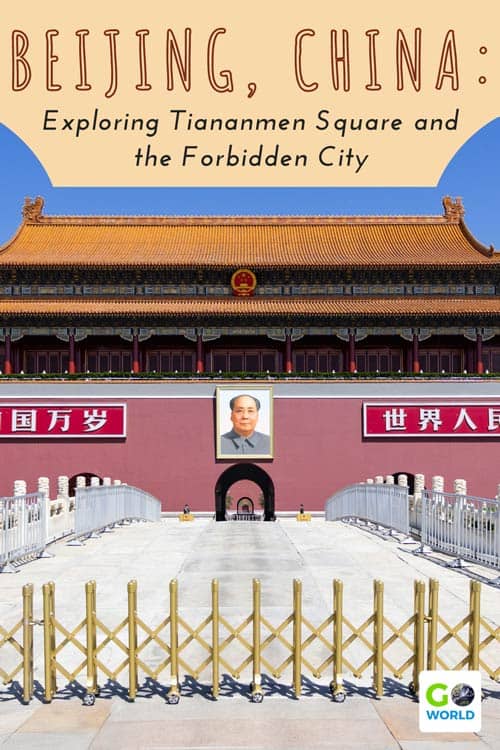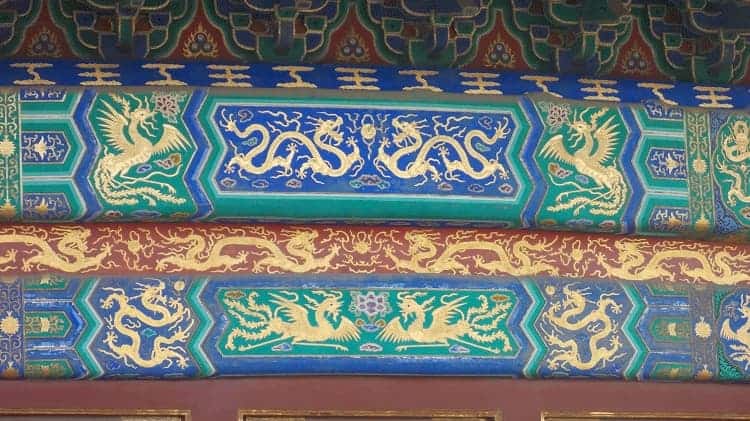

Tiananmen Square: The World’s Largest (and Most Controversial) Public Square
As we approached Tiananmen Square at the center of modern Beijing, our guide warned us not to talk too openly about politics. Although we saw no signs of oppression during our visit, it still exists today, and tempers flare when the subject of the student protests in the late 1980s is brought up.
We were in Beijing, China, to visit history, not create it, so we refrained from making any statements and simply looked for sights that would leave us impressions.
Tiananmen Square is the world’s largest public square. Perhaps its most well-known feature is Mao’s Mausoleum, where the embalmed, refrigerated body of Chairman Mao rests beneath rose-tinted glass and is raised for public viewing daily.
In the center of the square is the picturesque obelisk known as the Monument to the People’s Heroes. On either side of the mausoleum and monument are the China National Museum and the Great Hall of the People—a grand museum and the seat of the Chinese legislature, respectively.

On the far ends of People’s Square are perhaps more notable sites that date further back. On one end is the Qian Men, consisting of an Arrow Tower and the Zhengyang Men, together forming a double gate. The second is now home to a museum of Beijing history.
At the other end of the square is Tiananmen, the Ming Dynasty gate to the Forbidden City, where Mao’s enormous portrait hangs. This is where Chairman Mao proclaimed the People’s Republic of China in 1949.
It seems the appropriate place for such a declaration, appearing to draw a stark line between the concrete of industrial Tiananmen Square and the elaborate adornments of Imperial China’s Forbidden City.
Among the Chinese, Tiananmen is the most desirable photo op. Vacationers have snapped photos of themselves and their families, friends and colleagues with Mao’s portrait hanging on the Heavenly Gate behind them for decades.
Most people think of the enormous portrait as “original,” but it needs to be repainted and replaced every year due to the effects of the weather.
Today, Chinese tourists from around the nation asked to have their pictures taken in front of Mao’s portrait—with us! Touristy Mao caps crowning us, we smiled and let them take some selfies.

Permitted Stroll through the Forbidden City
After exploring Tiananmen Square, we approached Mao’s enormous portrait, and walked through the Gate of Heavenly Peace, entering the Forbidden City.
Here, in the city’s heart, we toured the main line down the center of the official Palace Museum. Completed in 1420 and designed with the harmonious principles of yin and yang, with an eye to nature, the Forbidden City is China’s most masterful work of architecture.

Every building we crossed in this magnificent place looked fit for an emperor, from the gates and halls to the offices and storehouses—all decorated in the same style. Even the bathrooms were beautiful. They were designed to be fit for an emperor.
After passing through the Meridian Gate, we crossed one of the five marble bridges. We proceeded up to the Gate of Supreme Harmony, where the emperor once received visitors and sometimes hosted banquets.
Beyond the Gate of Supreme Harmony, we took in the larger courtyard and climbed the stairs to the Hall of Supreme Harmony—the largest hall in the palace and the emperor’s main throne room. Between the sets of stairs flowed a long carriageway of carved marble; in the slab were the images of dragons, pearls, and clouds. This carriageway was for the emperor’s use alone.

At the top of the stairs and carriageway, outside the Hall of Supreme Harmony, we marveled at details like bronze statues, sundial, bronze cauldrons and the roof guardians that looked down from the corners of the buildings like Chinese gargoyles.
Next in the Imperial line was the Hall of Middle Harmony, a smaller hall where the emperor would go before entering the Supreme Hall for ceremonies. As we took in the halls at the center of the long courtyard, the sides of the palace area were closed in by decorative walls of rooms and chambers, making it like an enormous courtyard. It is said that the Forbidden City includes 9,999 rooms and antechambers. It felt as though we stepped back in time to Imperial China.
Beyond the Hall of Middle Harmony, we passed by the Hall of Preserving Harmony, and then exited through the Gate of Heavenly Purity. Well after we left the Palace Museum, we were given one last glimpse as one of the four majestic Arrow Towers loomed above us and stayed with us—in the distance—for quite some time as we walked away.
There is no shortage of things to do in Beijing. Although captivated, we spent hours walking through Tiananmen Square and the Forbidden City, not realizing how much time had passed until we were back on our coach. Such a day of exploring Imperial locales could only end with a meal fit for an emperor. Back at the private dining area at our hotel, we were in for a treat.

Dining in Beijing
Peking duck is the region’s specialty and one of China’s favorite dishes—sort of like a holiday turkey dinner in the United States.
After snacking on enough side dishes spinning on our lazy susan to make a meal in itself, our own Peking duck was served. The duck was cooked to perfection in a painstakingly precise way to keep the inside juicy and the outside crispy—while allowing the grease to fall away.
Duck may not have the same reputation as turkey for making people sleepy, but combined with the impressive sights and activities of the day, the Peking duck sent us quickly to a deep sleep fit for a king—or emperor.

If You Go to Beijing
Many major airlines offer flights directly from the United States to Beijing. Chinese airlines, such as Air China, offer some of the best deals.
You’ll want to book your hotel and likely your ride from the airport to the hotel ahead of time as it can be more confusing for Westerners than a visit to Western or Central Europe.
China is a country where a group tour may be worthwhile, even for travelers who like to “rough it” on their own. A number of companies offer low-priced packages that include your airfare, hotels, admissions and comfortable coach from one place to another. Some even include additional airfare between cities if interested in a longer tour.

Author’s Bio: Eric D. Goodman enjoys traveling as much as he loves writing. His new novel, The Color of Jadeite, is a literary thriller that takes readers through the exotic locales of China. Learn more about Eric and his writing at www.EricDGoodman.com or connect with him at www.Facebook.com/EricDGoodman.
- Travel Guide to Austria - April 17, 2024
- Travel Guide to Italy - April 17, 2024
- Travel Guide to Germany - April 17, 2024
